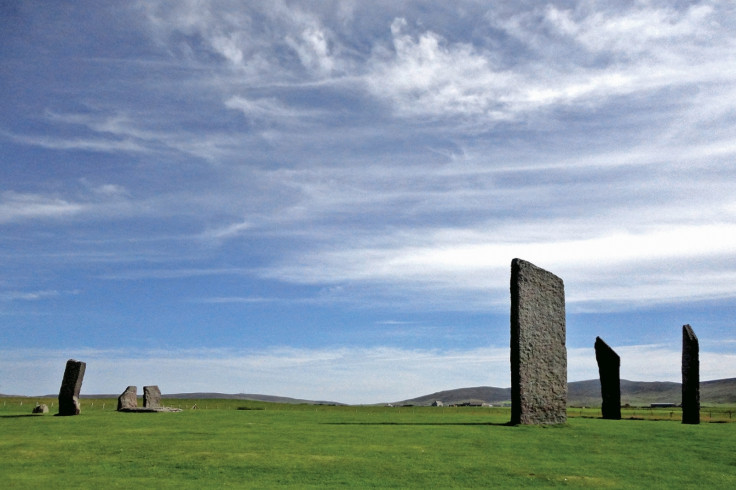Ancient stone circles align with the sun at solstice and with the moon during lunar standstill
Statistical analysis proves 5,000 years old stone circles were not established at random.

Stone circles on Scottish islands which are 5,000-year-old have intentionally been erected and organised on the landscape to match astronomical patterns, scientists have found out. Using innovative statistical methods, they have proven that the circles create alignments between the sun and the stones during winter and summer solstices.
Around 3,000 BC, people began expressing their cosmological beliefs across Scotland by introducing free-standing stones in the landscape. This practice went on almost until the end of the Bronze Age. This was the case at the site of Callanish on the Isle of Lewis and at the site of Stenness on the Isle of Orkney.
The stone circles there are among the most ancient, and constitute of 16 and 12 stones respectively. Both predate Stonehenge's standing stones by about 500 years.
Archaeologists have always suspected a relationship between the physical features of the circles and astronomical phenomenon such as solstices or lunar standstills. However, they were not able to prove that the alignments were intentional and not the result of random chance.
"Nobody before this has ever statistically determined that a single stone circle was constructed with astronomical phenomena in mind – it was all supposition," project leader and University of Adelaide Visiting Research Fellow Dr Gail Higginbottom explained.
In her recent study, published in the Journal of Archaeological Science: Reports, she and her colleagues came up with new statistical analysis to describe how the positions of the stones were purposely associated with astronomical patterns.
Statistical tests and chance
The researchers – from the University of Adelaide in Australia and the Australian National University in Canberra – identified eight possible alignments involving the solstices and major lunar standstills at Callanish and six more possible alignments at Stenness.
What is a lunar standstill?
The phenomenons occurs every 18.6 years. It corresponds to the moment the inclination of the moon's orbital path to the plane of the Earth's equator changes is at its maximum. In this context, the moon can be seen rising and setting more northerly and also more southerly than the solar extremes - in its monthly travels swings from about 28.5<sup>o south to 28.5<sup>o north of the Earth's equator.
What are solstices?
The summer solstice is the time of the year when the sun reaches its highest point in the sky at noon, it's the longest day in the year. The winter solstice is when the sun is at its lowest point in the sky at noon, it marks the shortest day in the year.
The team recreated 3D models of the landscapes and based on their observations, conducted different statistical tests to describe the different connections between the stone circles and the possible astronomical patterns they had identified.
Thus, they estimated there was only a 1.25% possibility that the alignments at Callanish were entirely random – and a 3.75% possibility for the alignments at Stenness.
"The likelihood of the monuments being astronomical is above 97.87% for Stenness and 97.87% for Callanish", Higginbottom said.
This suggest our ancestors designed these stones specifically so that they would be in alignment with the sun when it rose at the time of summer and winter solstice, or with the moon, during a major lunar standstill.
"This research is finally proof that the ancient Britons connected the Earth to the sky with their earliest standing stones, and that this practice continued in the same way for 2,000 years. These people chose to erect these great stones very precisely within the landscape and in relation to the astronomy they knew. They invested a tremendous amount of effort and work to do so. It tells us about their strong connection with their environment, and how important it must have been to them, for their culture and for their culture's survival," Higginbottom concluded.
© Copyright IBTimes 2025. All rights reserved.






















